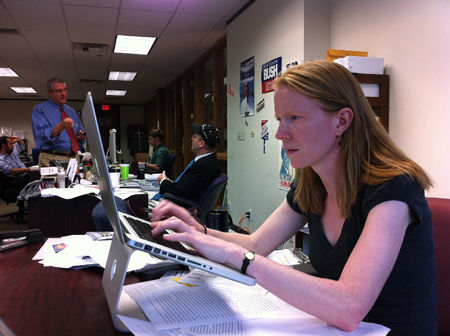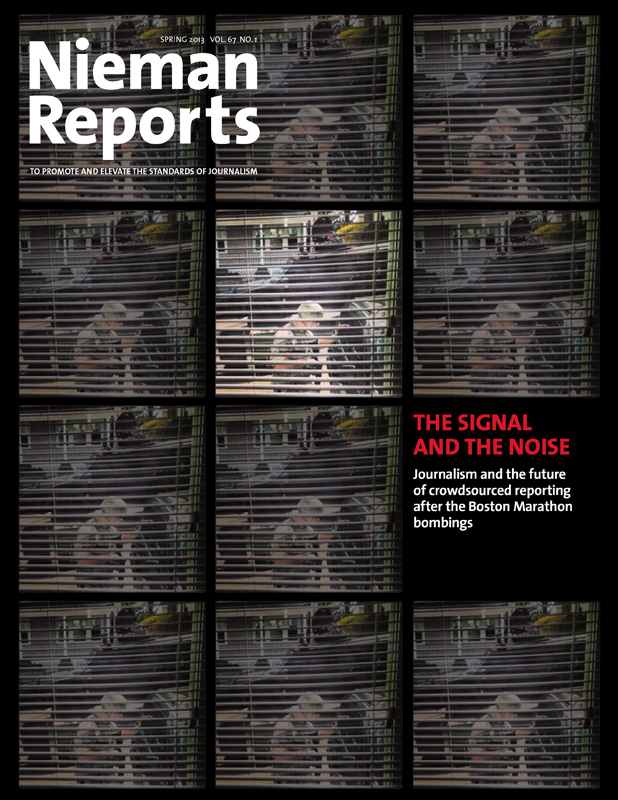
Photo by Todd Wiseman
“Never doubt that a small group of thoughtful, committed citizens can change the world. Indeed it is the only thing that ever has.” These words, from the anthropologist Margaret Mead, should be front and center for every media organization. Changing the world by providing information—that is what we are about.
Mead was right in another way, too. Change can start small.
I have spent the past three years at The Texas Tribune, an online nonprofit publication based in Austin. By the usual standards of newsrooms, we’re tiny. Our team includes just over a dozen reporters, plus several editors. And yet we’ve gotten a lot done. We’ve uncovered forced fights at a Houston-area residential treatment center for foster children, and we’ve created a database—plus an ongoing series of articles—on the conflicts of interest of elected Texas officials. We’ve won Murrow, Webby and Society of Professional Journalists awards.
In a small newsroom, we all chip in. If someone writes a breaking story—about a criminal-case sentencing, for example, or a health-care protest—he or she will e-mail it around to all Tribune reporters and plead for a fast edit. If no editor is available, another reporter steps in to edit and publish. That’s a little less formal than traditional newsrooms.
Small means that we interact constantly with one another. I sit 10 feet from our immigration reporter, Julián Aguilar, and we’ll swap story ideas on environmental issues near the Texas-Mexico border. I’m 20 feet from our crack data reporter, Ryan Murphy, who basically starts mapping oil and gas wastewater disposal wells or Texas cities running out of water almost before we’ve finished discussing the idea.
Talking with colleagues is useful (see: Marissa Mayer and her recent decree at Yahoo). In a small newsroom setting, it’s easy to do.
Being small almost forces us to be more choosey in the stories we pursue. The Texas Tribune has only one energy and environment reporter—me. So I try to spend my time judiciously, on stories that will have the greatest impact.
My personal philosophy is that if the Associated Press or the Austin American-Statesman is doing a story on a given topic, that’s terrific. It means I can spend my time doing something new. That’s why we recently ran a multi-part series on hydraulic fracturing and water, rather than chase other widely covered Texas water stories. Being small, in other words, necessitates being efficient.
Finally, I’ll let you in on a secret: Small is fun. Our tiny newsroom is full of smart, lively reporters who make me laugh so hard that occasionally I have trouble answering my office telephone in a professional manner. Thanks to my colleagues and their Twitter addictions, I’m always up on important developments like T. Boone Pickens’s tweets getting hacked, or a YouTube video of a Texas lawmaker dancing the Harlem Shake on the Capitol steps in support of public education.
All of this isn’t to say that The Texas Tribune doesn’t aspire to grow. As I sometimes have told my editors, if I had two other people working with me on energy and environmental coverage, then we could really get something done. That’s unlikely to happen. And I’m fine with it.
Kate Galbraith, a 2008 Nieman Fellow, reports on energy and environmental issues for The Texas Tribune.



